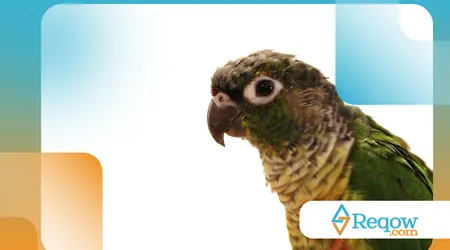Do pets have accents? How their region affects the sounds they make

Do pets have an accent? The idea that animals have variations in their sounds based on the region where they live may seem, at first glance, just a joke.
Advertisements
However, this notion, although it does not translate into “accent” in the same way as in humans, deserves further analysis.
After all, the influence of the environment on animal vocalization is a fascinating field.
What do we understand by “accent” in the animal kingdom?
When we talk about human accent, we refer to phonetic nuances that indicate a person's geographical origin.
In animals, the issue is more complex and manifests itself in other ways. Let's not expect a dog from São Paulo to bark like a dog from Rio.
Advertisements
However, variations in communication patterns are observed and studied by ethologists. The sound an animal emits is a direct reflection of multiple factors.
The acoustics of the environment, for example, plays a crucial role in how sounds propagate.
The influence of the environment on vocalization
Environments with lots of vegetation absorb high-frequency sounds. In contrast, open areas favor the propagation of low-frequency sounds.
This may lead to adaptations in bird alarm calls.
Read more: 7 Interesting Facts About Cats' Sleep
Urban noise pollution, in turn, forces birds to sing louder or at different frequencies.
Dogs living in apartments can learn to bark less. Interaction with humans also shapes communication.

Mimicry and social learning in pets
Many pets have accents of social learning. Parrots, for example, are masters at mimicking human speech.
This ability goes beyond mere imitation. They associate sounds with specific contexts.
Dogs also adapt their barking and howling to their familiar environment. They can learn to vocalize in ways that attract their owners' attention.
This malleability is indicative of intelligence and adaptability.
Notable cases of vocal variation in animals
Ornithologists have documented regional dialects in several bird species.
Sparrows in Europe, for example, have slightly different songs in different areas. These variations are passed down through generations.
Dolphins and whales also have complex "dialects." Their click and whistle patterns change depending on the group. This complexity suggests a rich social culture.
Acoustics and animal communication
The way sound travels through the air is crucial. Low-frequency sounds travel farther and penetrate obstacles. High-frequency sounds are more directional.
Learn more: Training Deaf Dogs: How to Use Visual Signals and Vibration to Communicate
In dense forests, birds use low-frequency calls. In open spaces, they may use high-frequency sounds. Habitat structure shapes the evolution of calls.
The role of coexistence with humans
Domestication introduced a new element into animal communication.
Pets have an accent influenced by routine and human commands. A working dog may vocalize differently.
A therapy dog, for example, can learn to emit soft sounds. This adaptation is a two-way street. We shape their behaviors, and they influence us.
Vocal plasticity and animal intelligence
The ability to modify vocalizations is a sign of neural plasticity. This is directly linked to intelligence. Animals with greater vocal plasticity are generally more adaptable.
Learning new vocalizations is a complex cognitive skill. It involves memory, hearing, and motor coordination. It's a constantly evolving field of study.
A 2023 study published in Royal Society Open Science, demonstrated that sparrows in Berlin altered their songs.
They began using higher frequencies to communicate above the city noise. This exemplifies real-time vocal adaptation.
Pets have an accent? More than we imagined!
Not in the human sense, but the idea that pets have accents has its foundation. The sounds they make are shaped by a number of factors.
Geographic environment, social interaction, and coexistence with humans are crucial. Animal vocalization is a dynamic field of study.
The observation that pets have accents may be another way to understand the complexity of animal life.
They not only adapt, but also innovate. Their vocalizations reflect a world of continuous adaptation and learning.

The impact of domestication on vocalization
Domestication is a process that accelerated vocal evolution. Dogs, for example, developed a range of barks.
Cats have learned to meow in specific ways to communicate with us.
++ How to identify pain in pets that don't show visible symptoms
Artificial selection also plays a role. Breeders can select animals with desirable vocalizations.
This demonstrates how human interaction impacts animal biology.
Sound adaptations in different species
The table below illustrates how different species adapt their vocalizations.
| Species | Dominant Environmental Factor | Example of Vocal Adaptation |
| Urban Birds | Anthropic Noise | Singing at higher frequencies or greater volume |
| Dolphins | Social Group | Development of individual vocal “signatures” |
| Dogs | Human Interaction | Barking variation for different needs |
| Coyotes | Population Density | Longer howls in less populated areas |
The Science Behind Animal Vocalization
Scientists use spectrograms to analyze animal sounds. They can identify patterns and variations. This tool helps map dialects and environmental influences.
The study of bioacoustics reveals the richness of communication. It's not just random sounds. There's a structure and meaning behind every vocalization.
How body language intertwines with sound
Vocalization doesn't exist in isolation. It's part of a broader communication system. Body language, facial expressions, and posture complement sounds.
A dog's bark can mean different things. It depends on whether its tail is wagging or bristling. Communication is always multifaceted.
The language of nature
Thinking about animal dialects is like observing the variation of human languages. Although there is no formal grammar, there are patterns and regionalisms. Nature speaks many languages.
Each species has its own vocabulary and "dialects." These dialects evolve and adapt. It's a testament to the incredible diversity of life.
The complexity of the animal sound world
The world of animals' sounds is vast and complex. From the click of a bat to the song of a whale, every sound has a purpose.
Understanding these nuances brings us closer to their worlds.
There is still much to be discovered about how animals communicate.
Research continues to reveal new layers of meaning. It's a field that constantly surprises us.
What can we learn from animal communication?
Observing animal communication teaches us about adaptability. They adjust to constantly changing environments. This is a valuable lesson for us.
The ability to adjust vocalization is a survival strategy.
It's a way to ensure the message is heard. Life, in all its forms, finds ways to express itself.
The sound that connects us
The idea that pets have accents It's more than a curiosity. It's a window into understanding the complexity of communication.
It shows us how animals are influenced by their environments and by us.
Instead of thinking about accents, we can think about "sound impressions." These impressions are unique to each animal and its context.
And that, in itself, is quite a discovery. Will we one day understand every nuance of their calls? The journey to decipher animal language continues.
Frequently Asked Questions
Do dogs from different regions bark differently?
Yes, although it is not an “accent” like a human, dogs can vary their barking.
This is due to environmental factors, such as urban noise, and the influence of their guardians' communication habits.
Do cats also have variations in their meows?
Yes, cats adapt their meows to communicate with humans.
They may develop specific meows to ask for food, attention, or express discomfort, which vary from home to home.
Does noise pollution affect pets' communication?
Yes, noise pollution, especially in urban areas, can force animals to adapt their vocalizations.
They may need to vocalize at higher volumes or different frequencies to be heard.
Does the animal's age influence its vocalization?
Yes, puppies and young animals can have different vocalizations than adults. Vocal learning and maturation occur throughout the animal's life, shaping its sounds.
Do animals learn to vocalize from each other?
Yes, many species, such as birds and dolphins, learn vocal patterns by observing other individuals in their group.
This social learning is crucial for dialect formation and group cohesion.
++ Cats can meow with an accent – depending on where they live
++ Can a dog understand dogs and humans from another country?
